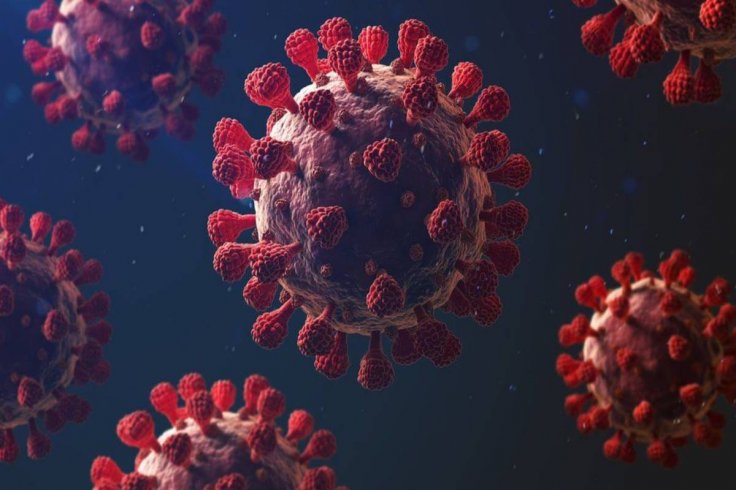A significant surge in human metapneumovirus (HMPV) cases in China has raised alarms across the country and neighboring regions. The flu-like virus, which typically causes mild illness, is proving to be particularly concerning for vulnerable groups, including children, the elderly, and those with compromised immune systems. Although rarely fatal, the virus can lead to severe respiratory issues, such as pneumonia and bronchitis, among these populations.
Overcrowded Hospitals and Rising Infections
The rise in HMPV cases has led to overcrowded hospitals, with reports indicating that children are being disproportionately affected. Patients are experiencing symptoms including coughing, fever, nasal congestion, sore throat, and shortness of breath. In severe cases, the virus can lead to bronchitis or pneumonia. Social media posts have highlighted long waits in hospital emergency rooms, and unverified reports have mentioned overwhelmed funeral homes, raising public anxiety.

Health authorities have ramped up emergency measures to manage the surge, but comparisons to the early days of the COVID-19 pandemic, particularly regarding the strain on healthcare facilities, have fueled concern. Despite this, Chinese officials have downplayed the situation, reassuring the public that respiratory illnesses this season are less severe compared to previous years.
HMPV and Its Symptoms
HMPV is a seasonal virus in the Pneumoviridae family, first identified in 2001. It is closely related to Respiratory Syncytial Virus (RSV), and typically causes flu-like symptoms such as cough, sore throat, and runny nose. Although most cases are mild, it can cause more severe respiratory issues in vulnerable individuals. Dr. Ishwar Gilada, an infectious disease expert, commented that the virus is generally mild but may have more significant effects on children under 14 and the elderly. The virus is highly transmissible, spreading through respiratory droplets and contaminated surfaces.
The virus is particularly concerning for individuals with weakened immune systems, as it can exacerbate existing respiratory conditions like asthma and lead to complications such as pneumonia or bronchitis. Researchers estimate that HMPV accounts for about 10-12% of respiratory illnesses in children, with 5-16% developing lower respiratory tract infections.
Neighboring Countries on Alert
With the rise in cases, neighboring countries are closely monitoring the situation. Cambodia has issued warnings about HMPV, citing its similarity to COVID-19. Officials in India and Taiwan have also expressed vigilance. Kan Biao, head of China's National Institute for Communicable Disease Control and Prevention, noted that infections among children under 14 are rapidly increasing.
Despite these concerns, Chinese foreign ministry spokesperson Mao Ning stated that respiratory infections are spreading on a smaller scale compared to previous years, and the virus is expected to peak in winter. Beijing has remained optimistic about controlling the outbreak, while international health bodies, such as the World Health Organization (WHO), have urged for transparency and global cooperation to prevent future health threats.
Calls for Transparency and Preparedness
The timing of the HMPV surge coincides with the fifth anniversary of the initial COVID-19 outbreak in Wuhan. The WHO has renewed its call for China to be more transparent about the origins of the virus, emphasizing the need for global data sharing and collaboration to prepare for potential pandemics. "Without data sharing and cooperation, the world cannot adequately prepare for future epidemics," the WHO stated.
While China insists that it has been transparent regarding COVID-19, the international community remains concerned about the possibility of future outbreaks. The situation with HMPV serves as a reminder of the importance of preparedness, timely response, and transparency in handling emerging health threats.
Treatment and Prevention
Currently, there is no specific antiviral treatment for HMPV, and antibiotics are ineffective as the virus is not bacterial. Treatment generally focuses on symptom management, including staying hydrated, resting, and using oxygen therapy when necessary. In some severe cases, corticosteroids may be prescribed to reduce inflammation. Health experts advise against relying on home remedies, especially in the early stages of infection.
Vulnerable groups—such as young children, elderly individuals, pregnant women, and those with weakened immune systems—are at a higher risk of complications from HMPV. However, the fatality rate remains low. Dr. Gilada emphasized the importance of early medical intervention, particularly for individuals experiencing severe symptoms.
The Road Ahead
As the winter season progresses, health officials in China and neighboring countries are on high alert. While the immediate risk of a widespread outbreak remains uncertain, the surge in HMPV cases highlights the ongoing challenges of managing respiratory illnesses during the cold months. In the absence of a vaccine, the best preventive measures include practicing good hygiene, avoiding close contact with infected individuals, and seeking medical attention promptly if symptoms worsen.
With rising concerns and increasing cases, the world is reminded of the critical need for preparedness and swift action to curb the spread of respiratory viruses and prevent further complications.









